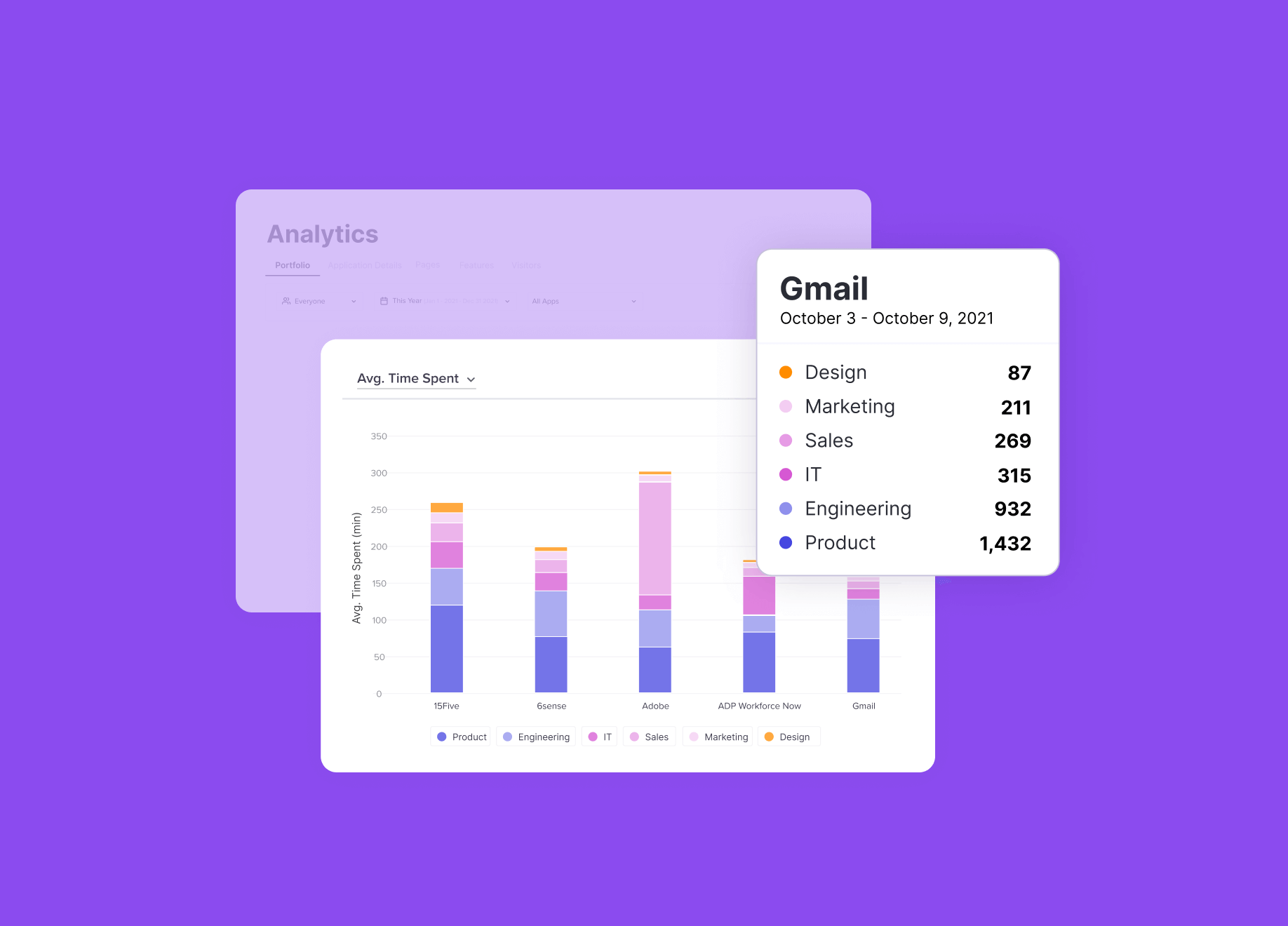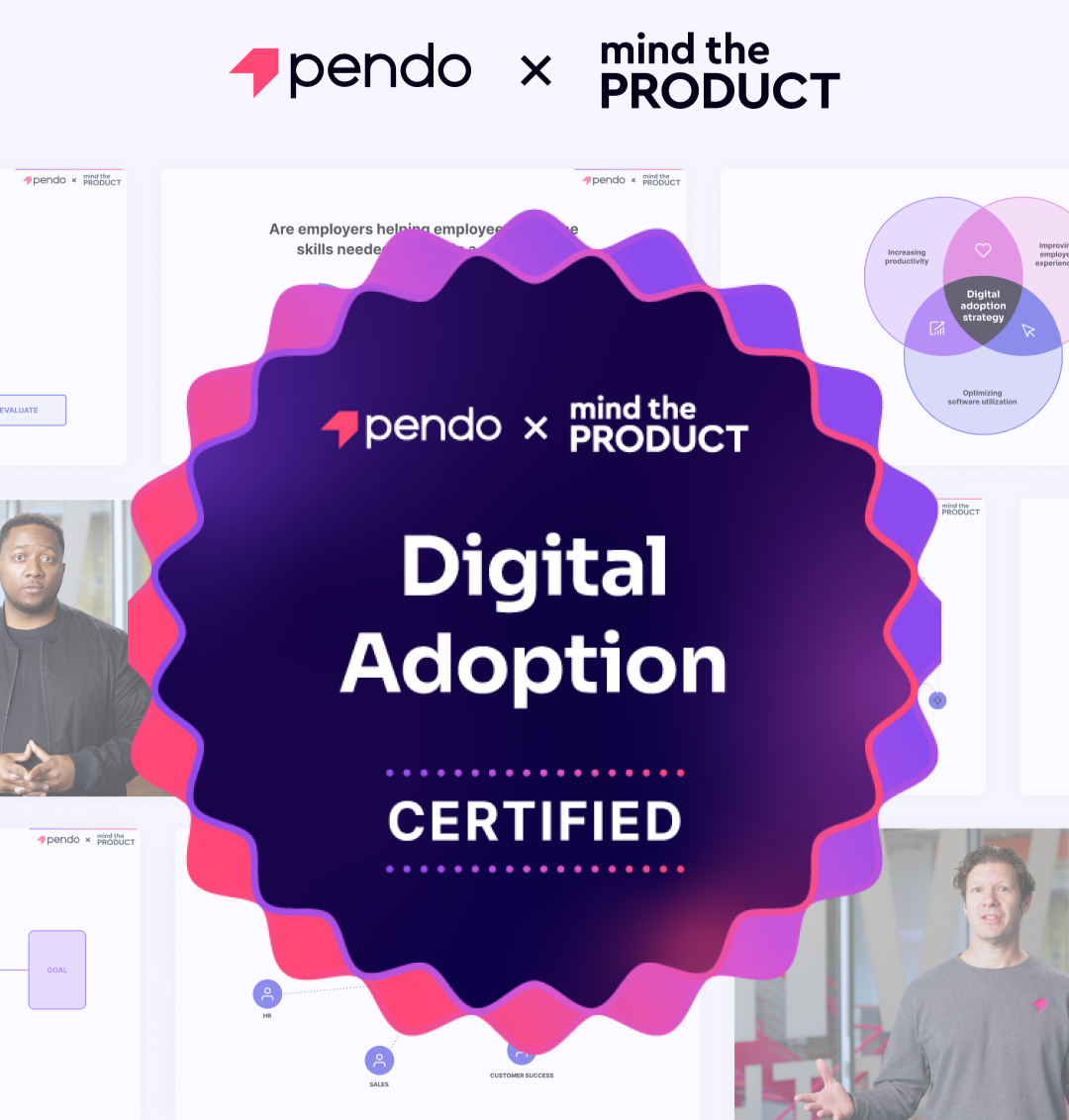Table des matières
Que désigne « l'adoption des produits » ?
L'adoption de produit désigne le processus d'activation d'une application Web ou mobile par un utilisateur (ou un client). Elle permet aux équipes chargées des produits de déterminer si un produit apporte la valeur ajoutée escomptée, en fonction du nombre d'utilisateurs qui interagissent avec celui-ci. En substance, l'adoption est le signe d'un logiciel et d'une entreprise prospères.
Pourquoi l'adoption des produits est-elle importante ?
Depuis le passage aux licences logicielles par abonnement, l'engagement produit, et plus particulièrement l'adoption du produit, est devenu un indicateur beaucoup plus crucial qu'auparavant, lorsqu'on achetait le produit en une seule fois. Les chefs de produit se sont toujours efforcés d'améliorer l'expérience client, mais la promotion d'une activation précoce est plus nécessaire que jamais dans le monde du SaaS, où des produits logiciels sont achetés tous les mois.
Indicateurs d'adoption de produit
L'adoption du produit peut être mesurée grâce aux indicateurs suivants :
- La régularité : correspond ici au nombre d'utilisateurs qui se connectent au produit un nombre minimal de fois, exprimé au fil du temps.
- Adoption des fonctionnalités : mesure le nombre d'utilisateurs qui interagissent avec des fonctionnalités de votre produit à un moment donné, ou au fil du temps.
- Croissance : mesure l'effet net de vos initiatives d'acquisition et de fidélisation. En d'autres termes, gagnez-vous de nouveaux utilisateurs plus rapidement que vous n'en perdez ? La croissance peut résulter de l'ajout de nouveaux comptes ou de l'augmentation de l'utilisation des comptes existants. Elle correspond à la somme des comptes ou visiteurs nouveaux et récupérés, divisée par le nombre de comptes ou visiteurs perdus.
- Utilisateurs actifs mensuels (MAU) : le nombre moyen de visiteurs uniques sur votre produit chaque mois.
- Utilisateurs actifs hebdomadaires (WAU) : le nombre moyen de visiteurs uniques sur votre produit chaque semaine.
- Utilisateurs actifs quotidiens (DAU) : le nombre moyen de visiteurs uniques sur votre produit chaque jour.
Comment mesurer l'adoption d'un produit ?
Vous pouvez mesurer le taux d'adoption d'un produit en vous basant sur le nombre de nouvelles inscriptions sur une période donnée.
Par exemple :
taux mensuel d'adoption du produit (%) = [nouveaux MAU / inscriptions mensuelles] x 100.
La méthode que vous choisirez pour mesurer l'adoption du produit dépendra largement de votre définition du terme « utilisateur actif ». Si votre logiciel est destiné à être utilisé au quotidien, le DAU est sûrement l'indicateur le plus pertinent. En revanche, si vous proposez un produit B2C, vous pourriez analyser la fréquence des conversions (par exemple, achats) ou le temps passé sur l'application.
Comment augmenter l'adoption d'un produit
Pour augmenter le taux d'adoption d'un produit, il convient avant tout d'améliorer votre produit ; plus l'expérience est bonne, plus les utilisateurs sont susceptibles de continuer à l'utiliser. Outre l'élaboration d'une stratégie d'onboarding in-app réfléchie, il existe d'autres moyens d'améliorer l'adoption du produit :
- Exploitez les données d'utilisation du produit : On ne peut pas améliorer ce que l'on ne mesure pas. Afin d'évaluer l'adoption d'un produit, vous devez vous appuyer sur les données d'utilisation du produit. Elles vous renseignent sur la façon dont les utilisateurs s'en servent, sur les difficultés qu'ils rencontrent et sur les possibilités d'améliorer leur expérience. Bien qu'il existe tout une série d'indicateurs sur l'adoption du produit, nous vous recommandons de suivre l'adoption des fonctionnalités, la régularité et la croissance (qui entrent également dans le calcul de votre score d'engagement produit).
- Communiquez avec les utilisateurs dans l'application : La meilleure façon de sensibiliser les utilisateurs aux fonctionnalités clés et d'encourager une meilleure utilisation de votre produit est l'envoi de messages in-app. En communiquant ainsi avec les utilisateurs, vous pourrez leur soumettre ces informations au moment le plus opportun, qu'il s'agisse de ressources pédagogiques, d'annonces sur les fonctionnalités, de prise en main ou autre.
- Intégrez l'assistance au produit : Proposer des ressources d'assistance au sein de votre produit encourage les utilisateurs à trouver par eux-mêmes des solutions lorsqu'ils sont bloqués ou se posent des questions. Cela minimise la probabilité qu'ils abandonnent et délaissent définitivement le produit. Bien que ce ne soit pas la première chose qui vienne à l'esprit, rendre l'assistance plus accessible est une tactique importante pour favoriser l'adoption du produit.
- Recueillez le retour des utilisateurs : En plus des données d'utilisation quantitatives, il est important de recueillir les retours qualitatifs de vos utilisateurs pour mieux comprendre leur expérience avec votre produit et tout ce qui fait défaut selon eux. Vous pouvez utiliser des études intégrées pour demander aux utilisateurs ce qu'ils pensent d'une fonctionnalité donnée, ou pour atteindre certains segments d'utilisateurs.
L'impact de l'onboarding sur le processus d'adoption produit
La période post-inscription est la plus importante du cycle de vie d'un produit – passé le premier jour, les taux d'adoption des produits chutent brusquement. Aider les nouveaux utilisateurs à prendre en main l'application Web ou mobile dès la première ouverture est donc absolument essentiel. En réalité, les utilisateurs finiront par apprendre, que l'expérience soit organisée ou non. Néanmoins, les entreprises qui mettent l'accent sur l'onboarding permettent aux utilisateurs d'être efficaces bien plus rapidement, ce qui booste les indicateurs d'adoption tels que l'utilisation active et la fidélisation.
L'amélioration de l'offre des applications SaaS a considérablement réduit les coûts subis par les clients pour changer d'outil. Ceux-ci sont beaucoup plus susceptibles de se désabonner s'ils ne sont pas satisfaits rapidement. L'adoption du produit dépend d'un flux d'intégration spécifique :
- Expliquer rapidement le fonctionnement du produit et ses cas d'utilisation
- Communiquer les avantages concurrentiels du produit
- Présenter les fonctionnalités les plus précieuses au consommateur
- Inciter les utilisateurs à revenir encore et toujours au produit
Qu'est-ce que la courbe d'adoption d'un produit ?
La courbe d'adoption est un outil permettant de déterminer comment (et quand) les différents types d'utilisateurs adoptent votre produit. Comme son nom l'indique, elle a la forme d'une courbe en cloche et comprend cinq types d'utilisateurs de logiciels : les innovateurs, les premiers adeptes, la majorité précoce, la majorité tardive et les retardataires.
Chaque produit possède une base d'utilisateurs variée, qui comprend différents profils, usages et niveaux de compétence technique. Il est important de prendre en compte l'incidence de ces facteurs sur la probabilité d'adoption, ainsi que sur vos stratégies et tactiques en la matière. Voici une présentation rapide de la courbe d'adoption de produit :
- Les innovateurs : Ce sont les toutes premières personnes à utiliser et à acheter votre produit. Il s'agit souvent de passionnés de technologie (qui utilisent déjà de nombreux autres logiciels), désireux d'explorer le dernier outil disponible dans votre domaine. Bien que ces utilisateurs soient les moins susceptibles d'acquérir la formule la plus chère, ils constituent une excellente source de retour d'expérience, dans la mesure où ils font partie des premières personnes à utiliser votre solution. Conseil de pro : utilisez des guides in-app pour recueillir leurs réactions pendant qu'ils sont en train d'utiliser votre produit.
- Les premiers adeptes : Ces personnes sont similaires aux innovateurs en ce sens qu'elles sont intéressées par les nouveautés, mais elles sont plus susceptibles d'avoir directement besoin de votre produit. Les premiers adeptes peuvent également vous aider à orienter votre stratégie de mise sur le marché, puisque votre produit doit chercher à résoudre les problèmes de ces utilisateurs.
- La majorité précoce : Ce groupe s'intéresse à un produit qui répond directement à ses besoins. Par rapport aux premiers adeptes, ils sont moins susceptibles de tolérer les bugs et les problèmes liés au produit, d'où l'importance de s'assurer que ce dernier est stable et qu'il permet aux utilisateurs d'accomplir leur travail. D'après la courbe d'adoption, ce groupe représente environ un tiers des utilisateurs à terme.
- La majorité tardive : Ces utilisateurs connaissent probablement l'existence de votre produit, mais n'ont pas encore franchi le pas de l'utiliser ou de l'acheter. Afin de favoriser l'adoption au sein de ce groupe, il est important de les informer sur votre produit d'une manière qui réponde à leurs hésitations passées. Une approche qui peut s'avérer efficace consiste à leur expliquer que l'utilisation de votre produit leur offrira un avantage concurrentiel sur le marché.
- Les retardataires : Ce sont les derniers à adopter votre produit, car ils doutent (ou ont douté) de sa valeur. Étant donné qu'ils représentent une part relativement faible de votre base d'utilisateurs, il n'est pas aussi important de leur vendre directement votre produit. Le fait d'atteindre ce groupe peut même indiquer qu'il est nécessaire d'innover ou d'itérer davantage votre offre de produits.
Quels sont les facteurs qui influencent le taux d'adoption d'un produit ?
De nombreux facteurs influencent le taux d'adoption de votre produit. Au sens le plus élémentaire, les utilisateurs doivent comprendre clairement la valeur de votre produit, ses principales caractéristiques et la manière de l'utiliser efficacement. C'est là qu'intervient l'onboarding. Votre expérience en la matière doit amener les utilisateurs à se sentir suffisamment à l'aise avec le produit pour commencer à l'utiliser aux fins prévues et à l'intégrer dans leur vie de tous les jours. En tirant parti de l'onboarding in-app, les équipes peuvent former et guider les nouveaux utilisateurs dans cette voie grâce à des tutoriels, des infobulles et d'autres types de messages in-app. Mieux encore, cette stratégie vous permet également de personnaliser les flux d'onboarding pour différents types d'utilisateurs (par exemple, en fonction de leur rôle) et de veiller à ce que le contenu soit adapté à leurs besoins particuliers.
Au-delà de l'onboarding, l'adoption dépend également de l'intuitivité de l'interface utilisateur (UI) de votre produit, qui ne doit pas ajouter de frictions à leur expérience. Les équipes peuvent utiliser les analyses produit afin d'identifier les problèmes ou les obstacles rencontrés par les utilisateurs. Cela leur permet de comprendre comment les utilisateurs se servent du produit, quelles sont les fonctionnalités clés qui ne sont pas utilisées (le cas échéant) et s'il existe des points de décrochage qu'il convient d'améliorer. À partir de là, il est conseillé d'utiliser des guides in-app pour diriger les utilisateurs vers les workflows et les accompagner en leur fournissant une aide contextuelle pendant qu'ils se servent du produit.
Où peut-on en apprendre plus sur l'adoption de produit ?
Pour les personnes qui souhaitent en savoir plus sur l'adoption du produit et des fonctionnalités, il existe un certain nombre de livres consacrés à ce sujet, dont Crossing the Chasm par Geoffrey A. Moore, The Innovator's Dilemma de Clayton M. Christensen et The Lean Startup par Eric Ries. Pendo a également publié des articles sur le processus d'onboarding des utilisateurs, ainsi que sur la façon de booster le ROI des produits.
Vous aimerez peut-être aussi




